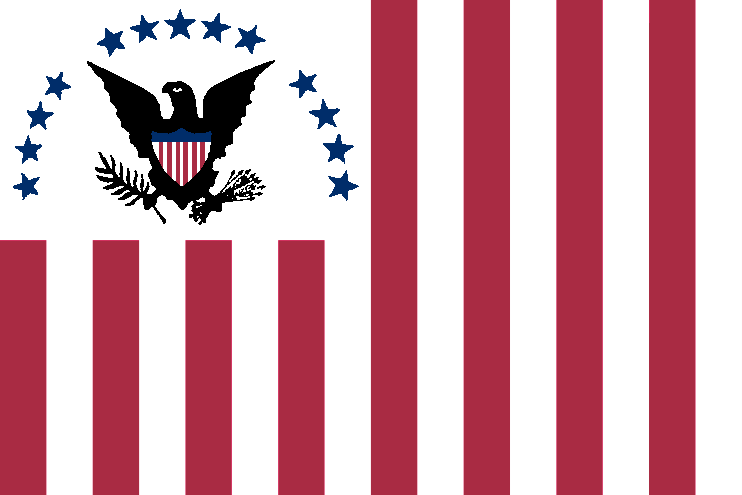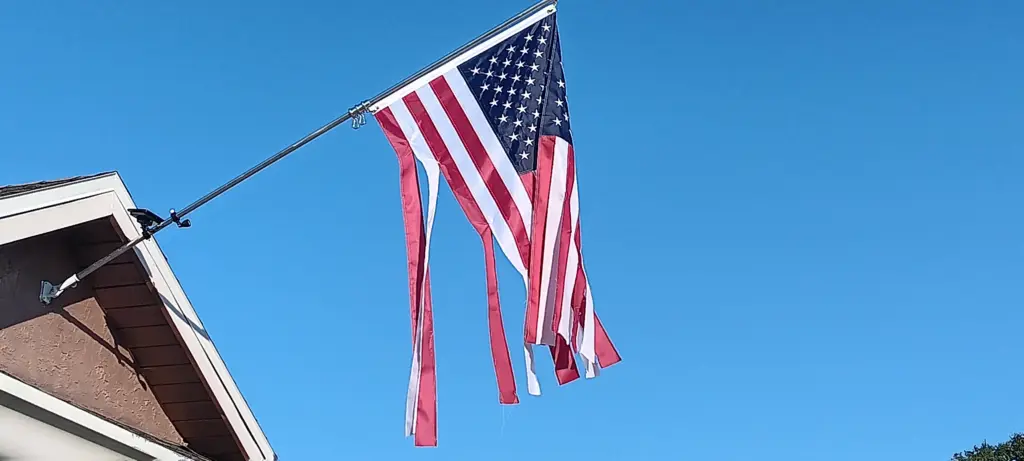Your cart is currently empty!

The United States Revenue Cutter Tribute Flag
In honoring a storied chapter of American maritime history, a new flag design has been crafted by Titus Flags to pay homage to the Revenue Cutter Service, a predecessor to today’s U.S. Coast Guard. This modern variation preserves the essence of patriotism while evoking the deep legacy of service at sea.

This Revenue Cutter Tribute Flag draws inspiration from the flags used by the service in the early days of the United States. Combining the historical aesthetics with the modern 50-star canton, the flag bridges the past and the present, symbolizing continuity and commitment to protection and duty.

Design Elements
- Canton with 50 Stars: The blue canton with its 50 stars remains in the upper left, honoring the current Union and reflecting the enduring unity of the states.
- 23 Vertical Stripes: The body of the flag consists of 23 alternating red and white vertical stripes. These stripes are divided into two sections:
- Below the canton, there are 10 vertical stripes, representing the enduring maritime tradition and the original states’ role in safeguarding early commerce.
- From the canton’s fly end to the edge of the flag, an additional 13 vertical stripes symbolize the original colonies and their foundational role in American independence.
- These 23 stripes, beginning and ending in red, also represent strength, courage, and the blood shed for freedom.
- Vertical Pennon: A 4-inch wide vertical pennon of alternating red and white stripes is attached at the top of the flag’s header. This pennon, hand-seized at the canton’s top fly-end corner, maintains harmony with the main flag and symbolizes the disciplined coordination and teamwork of the Revenue Cutters in protecting American interests at sea. The pennon adds a distinct element of naval tradition, recalling historic signal flags used by maritime forces.
The overall flag ratio remains a perfect 10:19, the traditional dimensions of the U.S. flag, ensuring that despite the addition of the pennon and the vertical stripes, it stays true to standard proportions.

Symbolism
This flag speaks to the spirit of service, unity, and protection:
- The vertical stripes evoke a maritime aesthetic, recalling the sails of ships that patrolled and protected U.S. waters during the early days of the Republic.
- The alternating red and white stripes signify vigilance and purity, qualities upheld by the Revenue Cutters as they enforced laws and defended against threats.
- The attached pennon represents the connectivity and unity of maritime forces, as well as the ability of modern Americans to honor and carry forward the legacy of their forebears.
Naming the Flag
In recognition of its historical inspiration and modernization, this flag could be named the Revenue Cutter Heritage Flag. This title captures both the historical roots of the design and its tribute to the traditions of service at sea, updated for contemporary America.
This flag, while rooted in tradition, is a modern nod to the forces that have shaped the maritime defense of the nation, standing as a proud symbol of vigilance, sacrifice, and continuity.

3×5 Flag of the United States “Tatters”
Perfect for those who understand the deeper significance behind our nation’s emblem, “Tatters” is more than just a flag—she’s a statement. Display her with pride, knowing that she tells a story of endurance, reflection, and the ever-evolving identity of the United States. Titus Residential 3’x5′ Flag HANDMADE IN USA